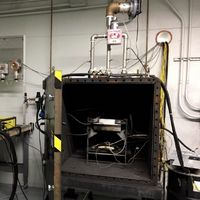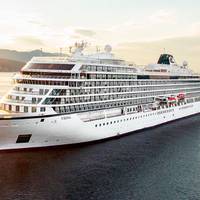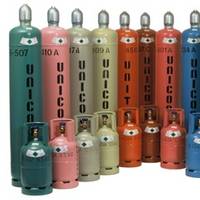New Safety Recommendations for Vessel Batteries

A new joint industry report offers recommendations for enhanced battery safety on vessels.The report, released by DNV GL in collaboration with the Norwegian, Danish and US maritime authorities, battery manufacturers, system integrators, suppliers of fire extinguishing systems, shipyards and shipowners, assesses explosion and fire risks in maritime battery installations and the effectiveness of fire extinguishing systems in the event of a battery fire.While onboard battery power represents a pathway toward more environmentally friendly vessel operations…
Viking Planning Hydrogen-powered Cruise Ship

Viking Cruises is reportedly working on a project to develop a vessel fuelled by liquid hydrogen that could become the world’s first cruise ship with zero-emission technology, according to the Norwegian Maritime Authority (NMA). NMA said the announcement was made by Viking Cruises project manager Serge Fossati during the Safety at Sea Conference in Haugesund. “This is a world sensation. Very exciting. If they pull this off, a distribution network may be established, which will enable others as well to use hydrogen as fuel…
R-22 Phase-out Presents Dangers and Expense -WSS

The shipping industry is facing price, supply and safety risks in the run-up to the global ban on R-22 (chlorodifluoromethane or HCFC) refrigerant, warns Wilhelmsen Ships Service, a global provider of services and products. The colorless gas, which has high ozone depletion and global warming potential, is still said to be in use on between 6,000 and 8,000 vessels worldwide. R-22 was outlawed throughout the EU in a process that ran from 2010 to January 1, 2015. It is currently being phased out in the U.S., where no new or imported R-22 will be permitted from January 1, 2020.
Tsavliris Salvages Collided Vessels in Aegean Sea

On July 4 Tsavliris Salvage dispatched its salvage tug Megas Alexandros from her Piraeus salvage station, to the assistance of bulk carrier Katherine (17,255 GT, 28,711 DWT), laden with 26,400 MT of hot briquetted iron, following collision with bulk carrier Baru Satu (9,978 GT, 16,190 DWT), in the Kafirea Strait, Aegean Sea. As a result of the accident, the M/V Katherine was rammed by the bulbous bow of the M/V Baru Satu penetrating her cargo hold no.5, (which flooded) locking the two vessels together.
IHC Pump Shaft Seal Acquires ATEX 95 Certificate

IHC Lagersmit acquires ATEX 95 certificate for its LIQUIDYNE pump shaft seal. IHC Lagersmit, part of IHC Merwede, has acquired the ATEX 95 registration for its LIQUIDYNE pump shaft seal. This registration signifies compliance with the European guidelines, which must be met in order for equipment to be used in potentially explosive atmospheres. The ATEX 95 registration has been issued by DEKRA Certification, which judged and approved the Technical Construction File for the LIQUIDYNE series, types LDS, L2T and L3T.
Alternate Propulsion Plant Using Fuel Cell Technology
Since the marine industry continually laments restocking engineering talent to power its future, Maritime Reporter & Engineering News decided to hit the road and find where the future lies. Institute. Presented here is the recent work of two Webb upper classmen, Dusty Rybovich and Michael Cariello. It is our responsibility as engineers to design a better world. Currently, the world is moving toward more environmentally friendly, or “green,” technologies with a focus on reducing emissions and finding more efficient sources of energy. Traditional marine diesel propulsion relies on the combustion of finite sources of energy and is ultimately an inefficient generator of electrical power and also creates harmful emissions.
Incident Reports Involving Lighter Refills
The IMO issued a Circular from the Subcommittee on Dangerous Goods, Solid Cargoes and Containers (DSC) reporting that inspections of containers loaded with UN1057 – Lighters or Lighter Refills – have shown an increasing number of incidents of explosive gas concentrations caused by leaking lighter fuel. Care should be exercised when handling such containers and checks should be performed when leaks are suspected. DSC/Circ. 23 (HK Law)
A New View
For years, forensic historians relied on survivor and eyewitness testimonies and, if available, material testing or intelligence reports to help gather evidence to piece together an event. In the early 1990's, seduced by computer technology, photo imagery analysis gained a tremendous uplift enabling imagery scientists to use special algorithms to enhance and sharpen images; changing the way we view the world today. History recorded that five midget submarines deployed as advance forces to attack capital ships in Pearl Harbor had failed to inflict any damage. By the use of digital photo imagery combined with forensic engineering analysis technology, the results of an analysis on a single photograph taken during the 1941 attack will change that view.





